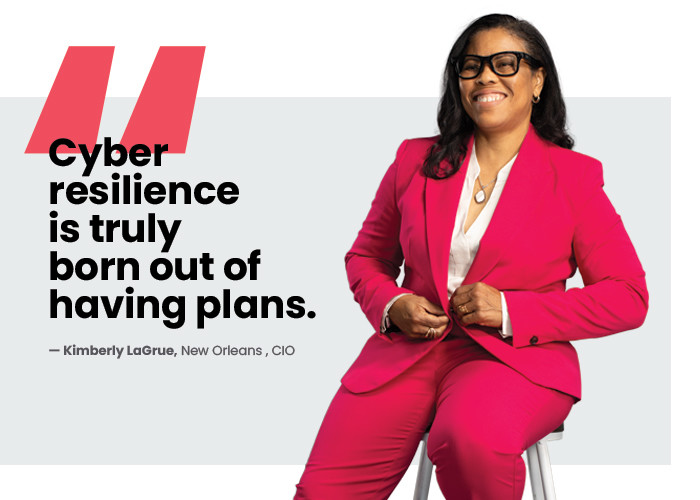STATETECH: Could you highlight some of the technological developments New Orleans has achieved during your tenure as CIO?
LAGRUE: Well, the thing that gets way more attention than I would like is surviving the 2019 cyberattack. That was an achievement for us. Having done as much preparation as we had, we led not only an extensive recovery but a swift and consistent recovery. It actually took us nine months to fully recover, but it involved a total refresh of our architecture. We stood up a robust disaster recovery strategy and a data center outside the city.
It was an enterprisewide refresh of our computing environment. It was a move to modern business applications and a significant reach into quality infrastructure that we had not made before. The interruption fortunately lasted for a brief period and happened two weeks before Christmas. We had a lot of staff on vacation and out of the office, and it gave us time to plan and a goal to restore service by the new year.
When the pandemic hit soon after, we were even ready for that, because we had implemented a remote work strategy in the three months after the cyberattack to protect the city from threats outside of our environment. Our pivot into remote work was pretty successful, and we are very proud as an organization that there was minimal interruption of city business during the pandemic.
We are also really proud of our strong data center migration strategy outside of the city. We can mitigate damage from environmental factors such as hurricanes and other external threats by placing our resources outside the city. We operate on a higher level for business continuity than many other agencies in our space. We are proud of that strategy and of how we’ve been able to virtualize much of our environment and modernize the infrastructure and the way our teams are working.
DISCOVER: How state and local governments can modernize data centers.
STATETECH: These sound like great elements of cyber resilience.
LAGRUE: They absolutely are. Cyber resilience is truly born out of having plans. And that cannot be an afterthought. Your strategy cannot be reactionary.
Filing an application for cyber insurance takes an organization through a series of questions that are critical to seeing how a potential investor or insurer perceives your organizational structure and your business continuity. Cyber resilience is about how you continue to work in an environment when threats are present. We think about all kinds of things. What if a bus ran through the window of our data center? We go through those scenarios and ask ourselves if the city would ever pay a ransom. We have built a strategy that makes sense for our organization. You have to know your environment, and you have to know your business and how to survive those things.
Every organization should take itself through the exercise of cyber resilience planning. Each organization faces its own unique challenges.
READ MORE: Boost data protection with Backup as a Service.
STATETECH: Could cities in particular be better at specific aspects of cyber resilience?
LAGRUE: Cities in particular must have a strategy and the personnel to do that work. They must realize that it is always underrated and underfunded. Some people may see that you have technical staff and ask why they can’t also perform security functions. Why do you need new people with specific expertise? Well, cybersecurity is different from other aspects of technology infrastructure, and not everyone understands that.
Cities are used to doing a lot more with less. We must call out overlapping roles in cybersecurity.
The other thing that we saw here was the attention our city leadership paid to cybersecurity. It was instrumental. It was the thing that allowed us to recover so quickly. It was having cyber insurance. It was greenlighting recovery projects. It was being able to retire legacy applications or not reintroduce legacy applications that had their own set of risks back into the environment after the cyberattack. Those things are strong supports for a cyber resilient strategy in any city, and they are not something that cities may think about a lot.
Cities are engrossed in the business of delivering services to constituents. But appreciating that a cyber interruption could knock down a city makes everyone think about that differently. In our cyberattack, we had the support of the mayor, the chief administrative officer and the homeland security office. The problem was elevated to those levels, and we were grateful that they appreciated the importance of the challenges.
The most integral part of a good resilience strategy for government, especially for city government, is for city leaders to pay attention to it and buy into the idea that these are real threats, and they must be addressed?












